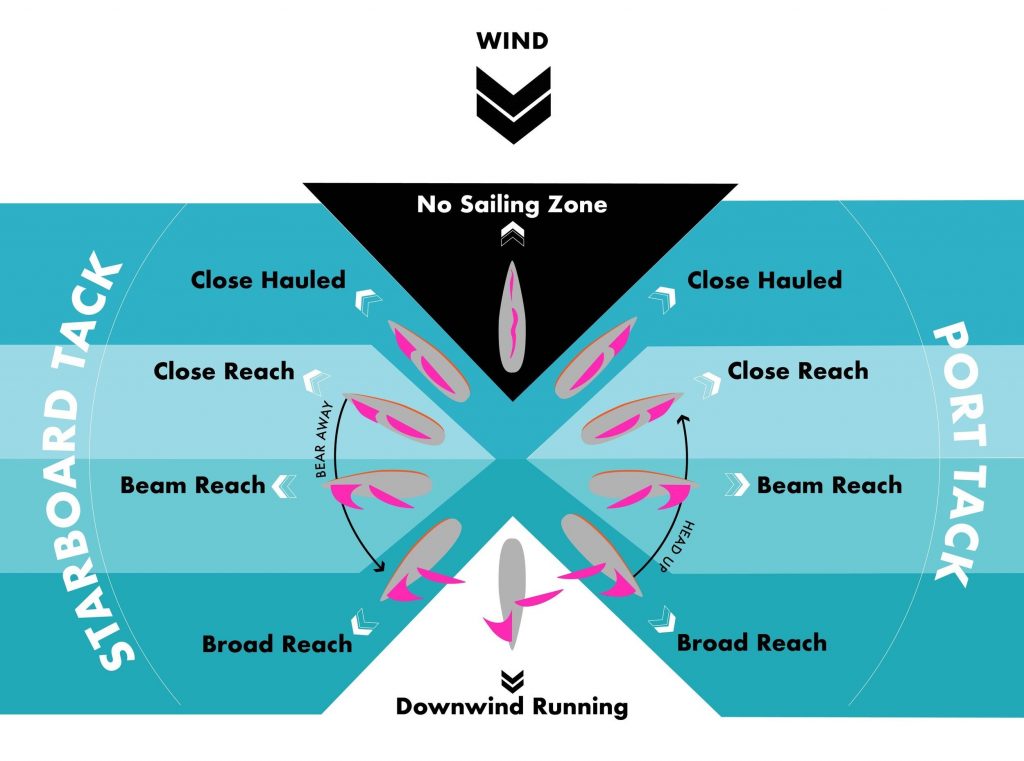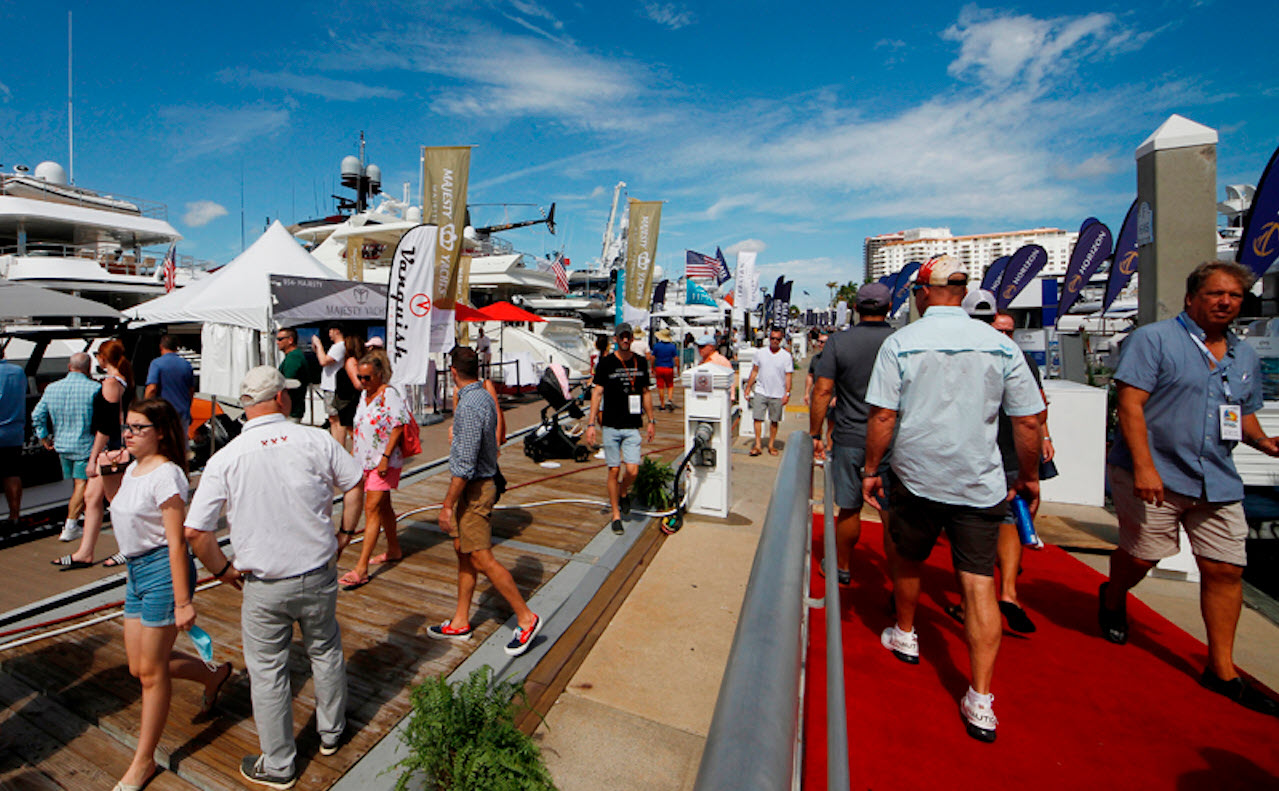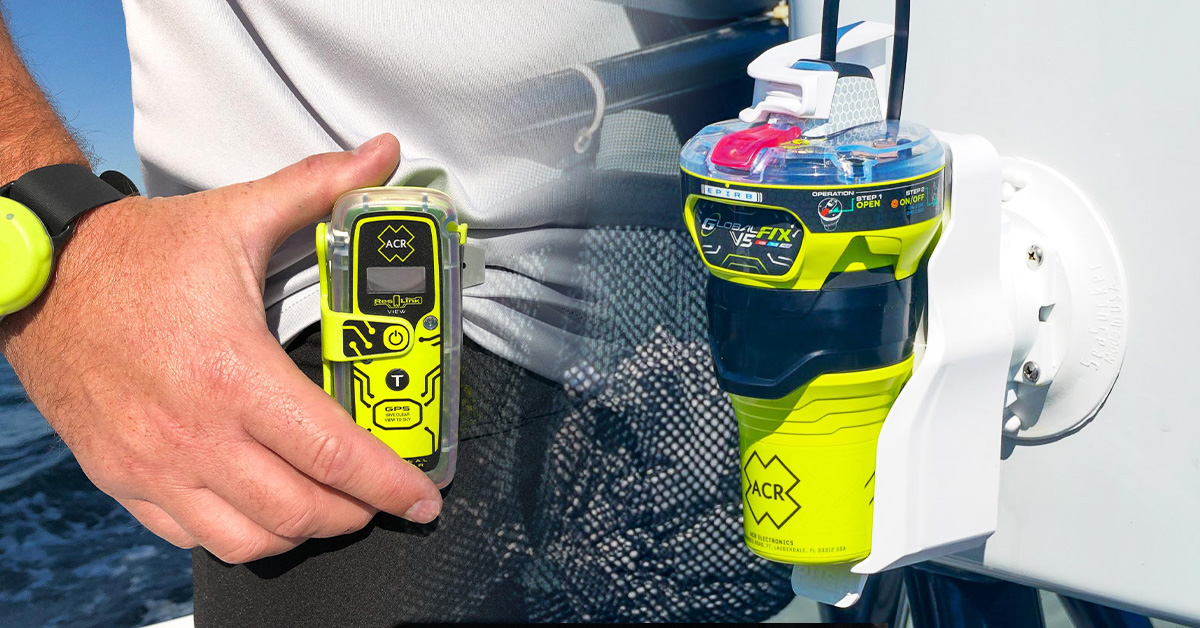Points of Sail: Mastering Wind Angles for Efficient Sailing
Sailing is all about harnessing the wind's power to propel a boat across the water. The way a sailboat moves in relation to the wind direction is called the point of sail.

Understanding the different points of sail is key to becoming a skilled sailor and getting the most out of your time on the water.
Points of sail include sailing into the wind, across the wind, and with the wind at your back.
Each point of sail requires different sail trim and boat handling techniques.
Mastering these skills lets sailors navigate efficiently in various wind conditions and reach their destinations.

Learning about points of sail opens up a world of possibilities for sailors. It allows them to plan routes, maximize speed, and enjoy the thrill of working with nature's forces.
Whether you're a beginner or experienced sailor, knowing the points of sail is essential for safe and enjoyable boating.
Key Takeaways
- Points of sail describe a sailboat's direction relative to the wind
- Proper sail trim and boat handling vary for each point of sail
- Understanding points of sail is crucial for efficient navigation and safety
Fundamentals of Sailing
Sailing involves harnessing wind power to move a boat across water. Key elements include understanding wind patterns and knowing the parts of a sailboat.
Understanding Wind Direction and Points of Sail
Wind direction is crucial in sailing.
Sailors use points of sail to describe a boat's position relative to the wind. These points include close-hauled, close reach, beam reach, and broad reach.
Close-hauled means sailing as near to the wind as possible. A close reach is slightly farther from the wind.
On a beam reach, wind hits the boat's side. A broad reach has wind coming from behind at an angle.
Sailors adjust their sails based on these points. They trim sails tightly when close-hauled and loosen them on broader points of sail.

Sailboat Anatomy and Sailing Terminology
A sailboat has several key parts. The hull is the boat's body. The keel is an underwater fin that provides stability.
Above deck, the mast supports the sails.
The main sail attaches to the mast and boom. The boom is a horizontal pole at the sail's bottom edge. Smaller sails may be added for more power.
Sailing terms can be confusing at first.
"Tacking" means turning the bow through the wind. "Jibing" is turning the stern through the wind.
"Luffing" refers to sails flapping when not properly trimmed.
Learning these basics helps new sailors get started on the water. Practice and experience build on this foundation.
The Points of Sail
Sailing involves navigating different wind angles to move a boat efficiently. These angles are called points of sail. Each point requires specific sail adjustments and techniques.
No-Go Zone
The no-go zone is the area directly into the wind. Boats can't sail in this zone.
It's about 45 degrees on either side of the wind direction. Trying to sail here causes the sails to flap uselessly.
Sailors must tack back and forth to make progress when the wind is coming from their destination. This zigzag path lets them move forward while avoiding the no-go zone.
Learning to recognize the no-go zone is key for new sailors. It helps them understand wind direction and how to adjust their course.

Close-Hauled Sailing
Close-hauled is sailing as close to the wind as possible. It's the first point of sail outside the no-go zone.
The sails are trimmed tightly to catch the wind.
On this point, the boat moves at about a 45-degree angle to the wind. It's used to sail upwind, though progress is slower than other points of sail.
Sailors must balance speed and direction when close-hauled. Too close to the wind, and the boat stalls. Too far away, and it loses upwind progress.

Reaching: Close, Beam, and Broad
Reaching covers three points of sail: close reach, beam reach, and broad reach. These points offer a mix of speed and directional control.
Close reach is just off close-hauled. The wind comes from the front quarter of the boat. It's faster than close-hauled but still allows upwind progress.
Beam reach has the wind coming from the side. It's often the fastest point of sail. The sails are eased out more than on a close reach.
Broad reach is when the wind comes from behind the beam. It's a fast, comfortable point of sail. The sails are let out even further.

Running Downwind
Running is sailing with the wind directly behind the boat. It's the opposite of close-hauled.
The sails are let out fully to catch the wind.
This point of sail feels calm because the boat moves with the wind. But it can be tricky. The wind can suddenly shift, causing an accidental jibe.
Sailors often use special sails like spinnakers when running. These large, colorful sails catch more wind and increase speed downwind.
Sailing Dynamics
Sailing involves harnessing wind power to move a boat across water. The direction of the wind relative to the boat determines the sailing techniques used.
Upwind Sailing: Tacking to Make Progress
Sailing upwind requires zigzagging across the wind. This technique is called tacking.
The boat moves at an angle to the wind, typically about 45 degrees off the wind direction.
As the boat can't sail directly into the wind, it must make a series of tacks to progress windward.
When tacking, the crew turns the boat through the wind to change direction. The sails are adjusted on each tack to maintain optimal wind capture.
The windward side of the boat faces the wind, while the leeward side is sheltered from it.
Wind shifts can affect upwind sailing. Sailors must pay attention to these changes and adjust their course as needed.

Downwind Sailing: The Art of Gybing
Sailing downwind involves moving in the same general direction as the wind. Gybing is a key technique used when sailing downwind.
It involves turning the stern of the boat through the wind, causing the sails to switch sides.
During a gybe, the apparent wind (the wind felt on the moving boat) changes direction.
This shift can be dramatic and requires careful sail handling.
The true wind (actual wind direction) remains constant, but the boat's movement affects how the wind is perceived on board.
Downwind sailing often allows for faster speeds as the wind pushes the boat along. However, it requires skill to maintain control and avoid accidental gybes.
Maximizing Efficiency and Speed
Sailors can boost their vessel's performance by finding the optimal angle to the wind and adjusting sails properly. These techniques help harness wind power for maximum speed and efficiency on the water.
The Fastest Point of Sail and Sail Trim
The fastest point of sail is typically a broad reach, with the wind coming from behind at about a 135-degree angle to the boat.
At this angle, sailors can achieve high speeds without fighting against the wind's direction.
Proper sail trim is crucial.
Sails should be eased out to catch more wind, but not so far that they start to luff or flap.
A well-trimmed sail has a smooth curve that guides the wind efficiently.
True wind speed affects boat performance. In light winds, pointing closer to the wind may be faster. In stronger winds, bearing away slightly often increases speed.
Harnessing Wind Power Through Sail Settings
Sail settings greatly impact a boat's ability to use wind power.
The main and jib work together to create a balanced, efficient sailing setup.
Sailors adjust sail shape by tightening or loosening various control lines.
A flatter sail works better when sailing upwind, while a fuller sail is ideal for downwind sailing.
The angle of attack - how the sail meets the wind - is key.
Sailors fine-tune this by adjusting the sail's position and shape to match the apparent wind angle.
Using telltales - small strips of fabric on the sails - helps sailors see air flow and optimize trim.
When telltales stream back evenly on both sides of the sail, it's set just right.
Advanced Sailing Techniques
Mastering advanced sailing techniques allows sailors to handle their boats with greater skill and confidence. These methods help navigate challenging conditions and optimize performance on the water.
Gybing Safely and Effectively
Gybing involves turning the stern of the boat through the wind.
It can be tricky in strong winds.
To gybe safely, ease the mainsheet as the stern passes through the wind. Keep the boat balanced and centered.
Move the boom slowly to the other side.
Be ready to trim the sails quickly on the new tack.
Practice in light winds first. As skills improve, try gybing in stronger breezes.
Gybing requires good timing and coordination. Communication between crew members is key.
A well-executed gybe keeps the boat moving smoothly without losing speed.
Dynamics of Sailing Upwind: Beating and Tacking
Sailing upwind uses principles similar to an airplane wing. The sails create lift, pushing the boat forward.
Beating involves sailing as close to the wind as possible while still moving forward.
Tacking is turning the bow through the wind to change direction. It allows sailors to zigzag upwind.
When tacking, turn the boat smoothly. Then, shift weight to keep it balanced. Finally, trim sails quickly on the new tack.
Proper sail trim is crucial when beating. Keep sails pulled in tight, but not too tight. This creates the most efficient airflow. Small adjustments can make a big difference in boat speed.
Conquering Light and Heavy Winds
Light winds require finesse. Keep sails fuller to catch more air. Then, reduce weight on the windward side. Move slowly to avoid disrupting airflow. Use telltales to fine-tune sail trim.
Heavy winds demand different tactics. Reef sails to reduce power. Then, keep the boat flat for better control. Be ready to hike out to counterbalance heeling forces. Finally, be ready to ease sails quickly if needed.
In all conditions, maintain good boat balance. Adjust sail trim and crew position as needed. Stay alert to changing wind patterns. With practice, sailors can handle a wide range of wind strengths confidently.
Safety and Emergency Maneuvers
Sailors must know key safety moves to handle tricky situations on the water. These skills can prevent accidents and help get out of tough spots.
Avoiding Accidental Jibes and Being Taken Aback
An accidental jibe happens when the wind shifts and pushes the boom across the boat unexpectedly. This can be dangerous, especially in strong winds. To prevent this, sailors should use a preventer - a line that holds the boom in place.
Being taken aback occurs when the wind suddenly comes from the front of the boat. This can make the sails push backward, causing loss of control. To avoid this, watch for wind changes and adjust course as needed.
If either situation happens, quickly steer into the wind to regain control. Stay alert and keep an eye on wind direction to stay safe.
Understanding 'In Irons' and How to Recover
'In irons' means the boat is stuck pointing directly into the wind and can't move forward. This often happens during tacking if not done right. To get out of irons:
- Let the sails loose
- Push the tiller away from the sail that filled last
- As the boat turns, trim the jib on the new side
- Once moving, straighten the rudder and trim the mainsail
Practice this maneuver in calm conditions. It will help sailors feel more confident if it happens unexpectedly. Remember to stay calm and work through the steps.
Sail Handling and Maintenance
Taking care of sails and using them well is key for good sailing. Regular checks and smart use of trim tools help sails last longer and work better.
Routine Inspection and Care for Sails
Check sails often for wear and tear. Look for frayed edges, loose stitching, or small holes. Fix these issues fast to stop bigger problems.
Clean sails with fresh water after sailing in salt water. This stops salt from hurting the fabric. Let sails dry fully before storing them.
Don't fold sails the same way each time. This prevents weak spots from forming. Store sails in a cool, dry place away from sun and damp.
For winter, take sails off the boat. Clean them well and check for damage. Make repairs before the next season starts.
Effective Use of Telltales and Trim Aids
Telltales are small ribbons on sails. They show how wind flows over the sail. Watch them to trim sails right.
On the front of the sail, both telltales should stream back. If the top one flutters, tighten the sail. If the bottom one flutters, loosen it.
Use telltales on the leech (back edge) of the sail too. They should flow straight back. If they spin or go inward, adjust the sail.
Trim aids like draft stripes help see the sail's shape. Keep the stripes even for the best sail shape.
For spinnakers and genoas, watch the luff (front edge). It should curl slightly. Too much curl means ease the sheet. No curl means trim in.
Navigational Strategies
Skilled sailors use wind and sea conditions to their advantage. They plot courses and adjust sails to reach their destination efficiently.
Utilizing Wind Shifts and Nautical Terms
Sailors must pay close attention to wind shifts. A change in wind direction can mean the difference between a fast trip and a slow one. They use terms like "port tack" and "starboard tack" to describe which side of the boat faces the wind.
When the wind shifts, sailors may need to "tack" or "jibe" to stay on course. Tacking turns the boat through the wind, while jibing turns away from it. These moves help sailors make the most of changing conditions.
Sailors also use nautical terms to communicate clearly. Words like "leeward" and "windward" help crew members understand where to move or adjust sails.
Plotting Courses: From Racing to Cruising
Race sailors plot courses to find the fastest route to the finish line. They study wind patterns and currents to gain an edge. Racers often use a zigzag path called "beating" to sail upwind.
Cruising sailors focus more on comfort and safety. They plan routes that avoid rough seas and take advantage of favorable winds. Cruisers may choose a longer path if it means smoother sailing.
Both types of sailors use charts and GPS to stay on course. They watch for landmarks and buoys to confirm their position. Good navigation skills help sailors stay safe and reach their goals.
Cultural and Recreational Aspects of Sailing
Sailing offers a mix of competitive thrills and relaxing leisure. People enjoy it both as a sport and a fun pastime.
Sailing as a Competitive Sport
Sailing races test skills and teamwork. From small dinghies to big yachts, races happen all over the world. The America's Cup is the top sailing event. It started in 1851 and still draws top sailors today.
Olympic sailing brings together the best athletes. They race in different boat classes. Sailors must know wind, waves, and tactics to win.
Local clubs hold races too. These let sailors of all levels join in. Racing builds skills and friendships.
Leisure Sailing: The Rewards and Thrills
Many people sail just for fun. It's a way to relax and enjoy nature. Sailing lets you explore coasts and islands at your own pace.
Day trips are popular for beginners. They can try steering and handling sails. Longer trips let sailors see new places and test their skills.
Sailing builds confidence and teamwork. It teaches problem-solving in a fun way. The quiet of wind power is calming for many.
Charter boats let people sail without owning one. This makes sailing trips easy to plan. Sailing schools teach the basics to newcomers.
Improving Sailing Skills and Knowledge
Mastering the art of sailing takes time and effort. Sailors need to focus on practice and learn from their experiences to grow their abilities on the water.
Practice and Patience: The Key to Mastery
Sailing skills improve with regular practice. Beginners should start with the basics, like sail trim and steering. As they gain confidence, they can try different points of sail.
Patience is crucial. Novice sailors shouldn't expect to become experts overnight. Instead, they should set small goals and work towards them step by step.
Practicing in various conditions helps build versatility. Light winds teach finesse, while stronger winds build confidence. Sailors can also use simulators to practice when they can't get on the water.
Learning from Challenges and Experiences
Every sailing trip offers chances to learn. Difficult situations often teach the most valuable lessons. Sailors should reflect on what went well and what didn't after each outing.
Facing challenges head-on helps build problem-solving skills. For example, sailing upwind in a zig-zag pattern teaches how to optimize boat speed against the wind's direction.
Joining a sailing club or taking lessons can speed up learning. Experienced sailors can share tips and tricks that aren't found in books.
Keeping a sailing log helps track progress and remember important lessons. It's a great way to see how far you've come and identify areas for improvement.
Frequently Asked Questions
Points of sail are key to understanding how a sailboat moves through the water. Sailors need to know how wind direction affects speed, sail trim, and safety. Let's explore some common questions about sailing points.
What does each point of sail represent in relation to wind direction?
Points of sail show how a boat moves compared to the wind. They range from close-hauled to running. Close-hauled is sailing as close to the wind as possible. Running is sailing with the wind directly behind the boat.
Beam reach means the wind is at a right angle to the boat. Broad reach has the wind coming from behind at an angle.
How does the angle to the wind affect a sailboat's speed and heading?
Wind angle greatly impacts boat speed and direction. Sailing closer to the wind usually means slower speeds but a more direct path.
Sailing away from the wind often allows faster speeds but a less direct route. Sailors must balance speed and direction based on their goals.
Which point of sail provides the best speed for a sailboat?
A broad reach typically gives the fastest speeds. This point has the wind coming from behind at an angle.
It allows sails to catch a lot of wind without being fully extended. Boat design and wind strength also affect top speeds at different points.
Can you explain the differences between reaching, running, and beating?
Reaching happens when the wind comes from the side. It includes close reach, beam reach, and broad reach. This often gives good speed and control.
Running means sailing downwind with the wind directly behind. It can be fast but tricky to control.
Beating involves sailing as close to the wind as possible. It's slower but helps boats make progress upwind.
How can sailors optimize their sail trim for different points of sail?
Sail trim changes based on wind direction. For close-hauled sailing, sails should be tight and angled.
On a reach, sails can be eased out more. When running, sails should be let all the way out.
Proper trimming maximizes power and reduces drag. It takes practice to get it right in different conditions.
What are the safety considerations when navigating through various points of sail?
Each point of sail has unique safety concerns. Close-hauled sailing risks capsizing if the wind gets too strong.
Running can lead to accidental gybes, which can be dangerous. Sailors must stay alert and adjust sails as needed.
It's crucial to watch for changing wind and water conditions. Having a plan for emergencies at each point of sail is important.
Charlie is Editor-in-Chief of Sea Magazine







